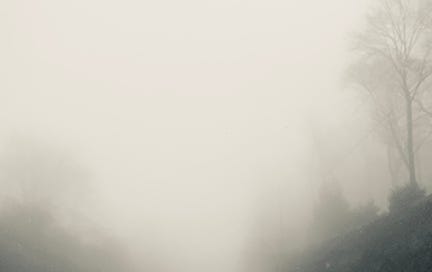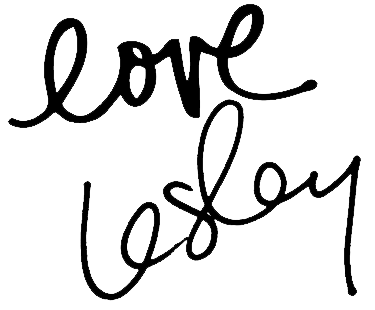I left the house on an unusually sunny, 60° January morning after a week on the snow-covered mountain. Sunglasses in place, hands on the steering wheel, I headed a mile downhill and arrived in the land of fog. Fog is not unusual here on the mountain. I like to say I sometimes live in the clouds. If it’s foggy up here, it’s usually clear down below.
Blue Ridge Summit is the next (wee) town below, but still on the mountain (as the name implies). I often see fog in the meadow that sits just to the east of the mountain pass descent, but today the whole town is blanketed in fog, dark and seemingly impenetrable. Removing the sunglasses I forgot I was wearing didn’t help at all. I couldn’t see beyond 10 feet in front of me. This was a road I traveled often, straight, but for one big curve, and through the mountain pass, downhill all the way with a speed limit of 55.
I admit, I was scared. I knew the way but I couldn’t see it. Knowing the road well, I mustered my courage and drove the 4 miles to my destination at a comfortable speed, heading into the known unknown.
Eyes riveted on the road, I got to thinking - this is what it’s like when you’re making art. You know what you’re doing, perhaps you’ve done it before, but each time you begin you are heading into a known unknown situation. It sounds something like this:
Will I be able to make what I envision?
Do I trust myself enough to attempt this?
What if I make a mistake or judgment error?
Is this right? Is there even a “right” decision?
Am I crazy to try this?
A very popular quote comes to mind at this point in my writing, Feel the fear and do it anyway. It’s actually a book title by Susan Jeffers. And that brings up another point. So many of us were raised to be cautious, to never partake in risky business. God forbid we should do something stupid. We are taught to question our judgment, which isn’t a bad thing, but when weighing your options, do you go with the known (safe) or the unknown (scary)? It depends on the level of risk involved, doesn’t it?
Growing up I wanted to be a doctor, a pediatric surgeon to be exact. It was the 60s. I knew there were women in med school, but damn few. I’d heard stories about how they were “taking the place of deserving men,” harassment, and overt hostility. I wasn’t courageous or bold enough to go that route at that time. I considered nursing, but it was all for naught. Love and a child took the place of my college years.
After several credits obtained in junior college night classes, in 1976 I enrolled in the University of Maryland as Pre-Med. I lasted one month. I couldn’t juggle a marriage, working, raising a child, the heavy load of classes I registered for (Comparative Anatomy, Ethics, Physics, studying, and the free on-campus tutoring I desperately needed for Physics).
I did the next best thing available to me. I became a medical assistant and quickly, the office manager, to an OB-GYN doc. It was a dream job. The Dr took me under his wing and taught me so much. )I think he missed his time on the faculty at Georgetown Medical School.) He took me into the OR when he did surgery at the Hospital. I was able to attend two c-sections with him, taking the place of the husbands who were not allowed in the OR at that time (it was still the 70s.) It all kept that little flame of desire to be a doctor alive.
All that is background to the part of the story that follows.
Sometime, around 1982, I sent away for information on Johns Hopkins Medical School and received a lovely booklet that included a list of the incoming freshman and their addresses on the last page. One was a local woman, so I felt a sense of connection. I wrote asking if I could talk to her about medical school. She offered to meet with me at the school and give me a tour. She was lovely, and even asked if I wanted to see the cadaver assigned to her. (Yes, it’s creepy, but it’s the nitty-gritty of med school and I’d already done some (lame) dissecting in Comparative Anatomy). It was a sacred moment.
When she asked what prompted me to write to her, I explained that I hadn’t given up my dream of being a doctor and wanted to know what it was like to be a woman in med school. She was amazed and said, “I never would have had the courage to do that.”
I was stunned. This intelligent, confident, brave young woman thought my writing a letter to a stranger was courageous. Everything she had done to get where she was took way more courage.
My point? Courage and risk, choosing the comfort of the known vs the fear of the unknown is personal. Very personal. The timid will choose the lesser-risk option while the bold will make a move with certainty, or at least a “what have I got to lose” attitude. It’s a question of how much you trust yourself to make the best choice - for you.
So where does artmaking fall on the scale of risk? It’s as low risk as writing a letter, isn’t it? Nothing bad will happen as you progress into the deep, dark fog of the unknown that is the artmaking process. It’s a known unknown. You know the way but you just can’t see through to the other side, to the end result.
Taking risks doesn't mean shirking responsibility, but embracing possibilities.
Vick Hope
No, I never did go to med school or fulfill that dream, but many years and 6 kids later I did earn a BA in Women’s Studies (Magna Cum Laude) from the University of Maryland in 2003. Life continued to happen and carry me all the way to where I am now - a woman full of wisdom who makes art that keeps her soul healthy while aging gracefully. A woman who tries to make people feel better with her own special way of healing






Brilliant post, I love this. Your analogy about driving into the fog of art-making is so telling, it made me smile with recognition. Also totally agree about the perception of courage. So much of what we do as women and artists is dismissed as 'domestic' or 'small' but how hard is the work of healing and supporting and being, yes, personal. ps Women's Studies sounds a great alternative to medicine in the end?
Feel the fear and do it anyway...my new mantra!
Thanks Lesley.